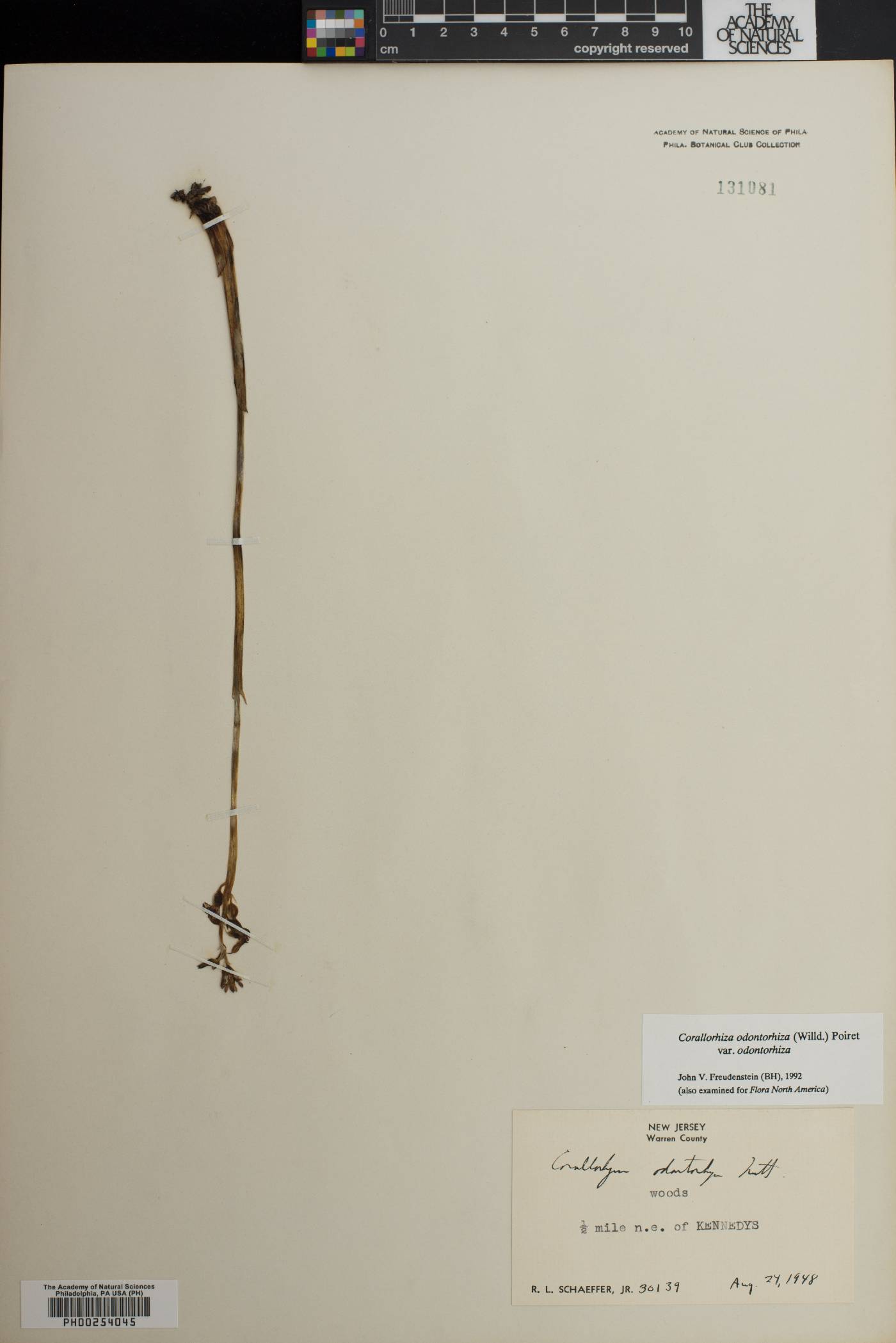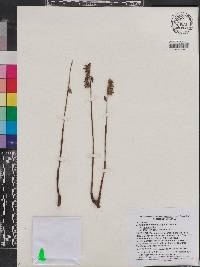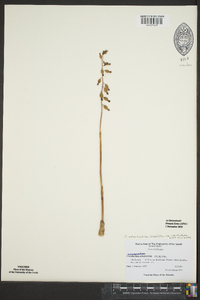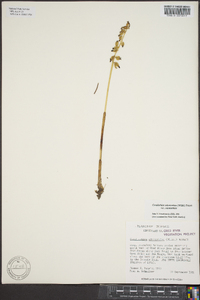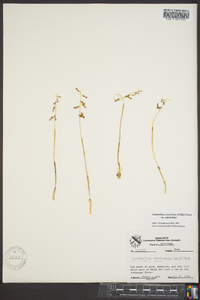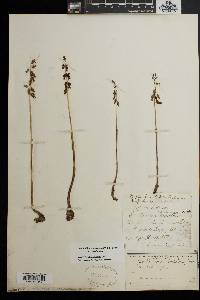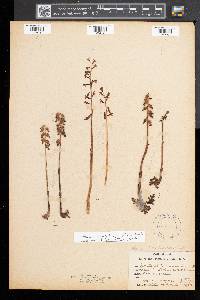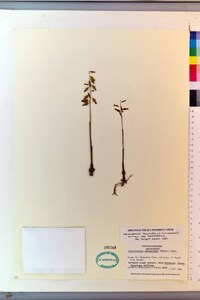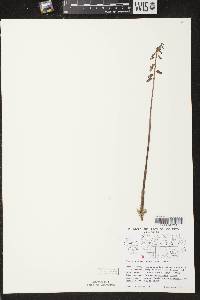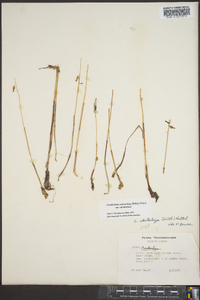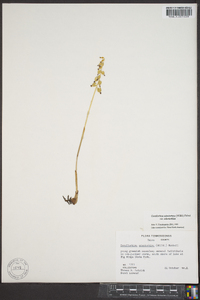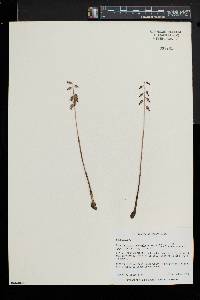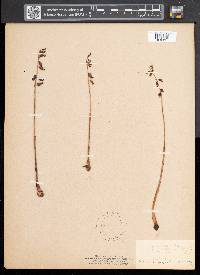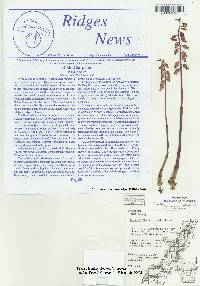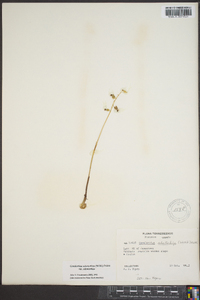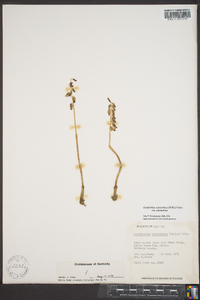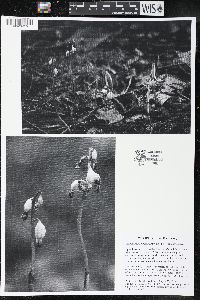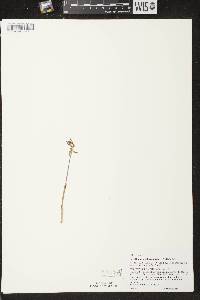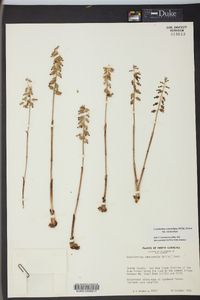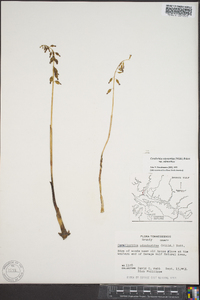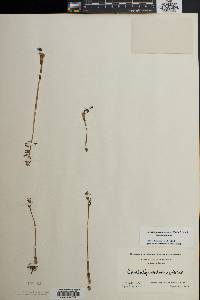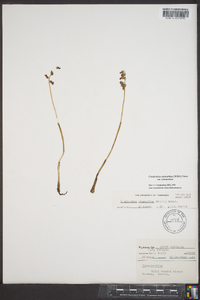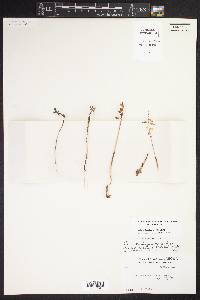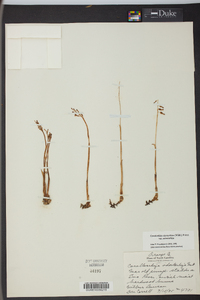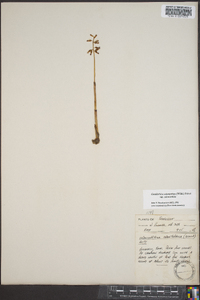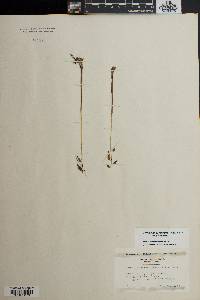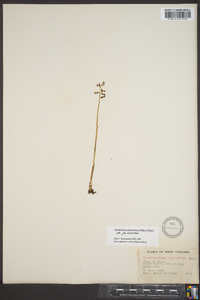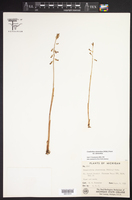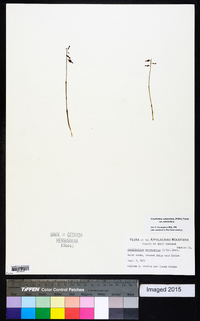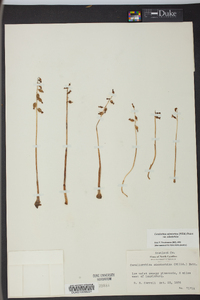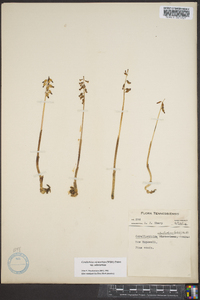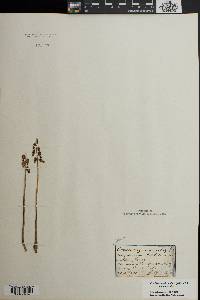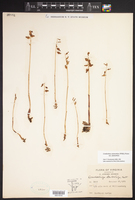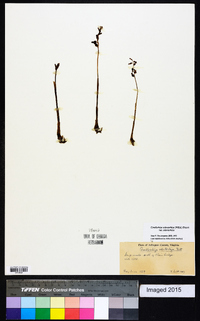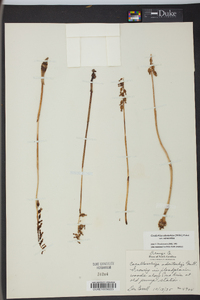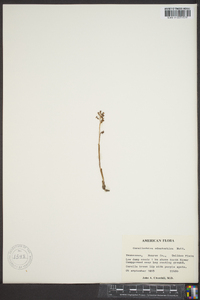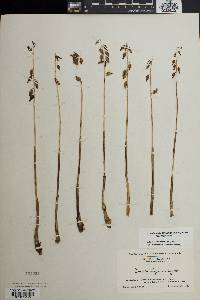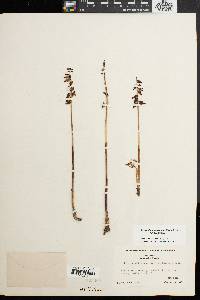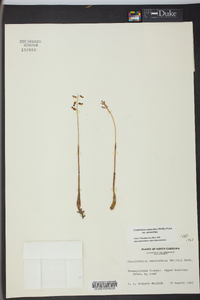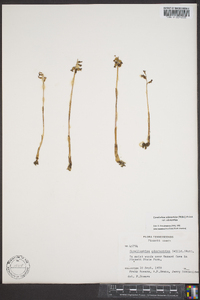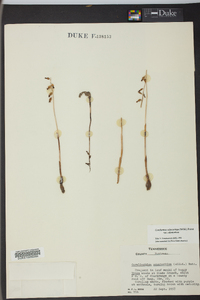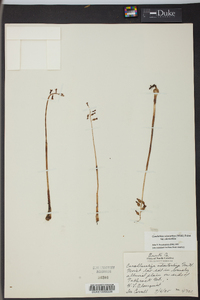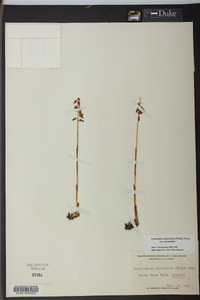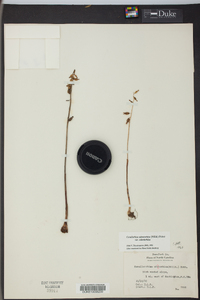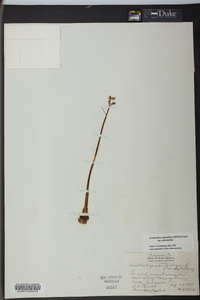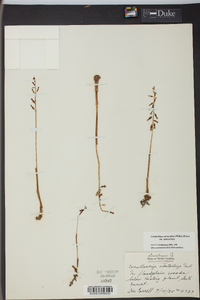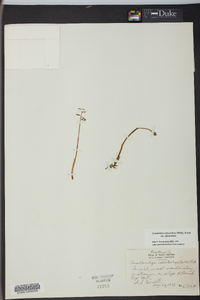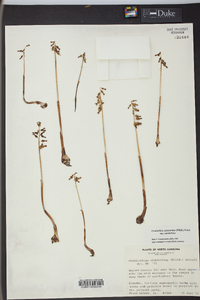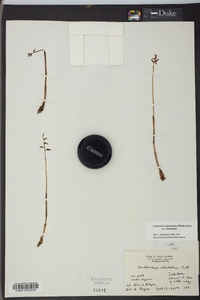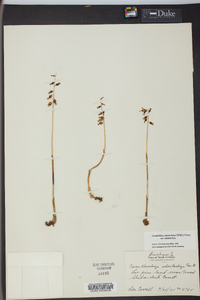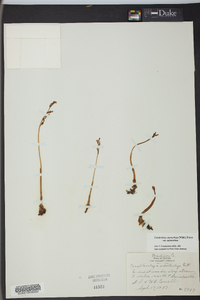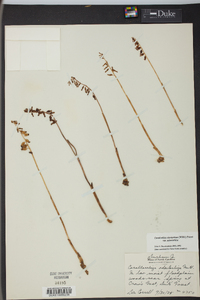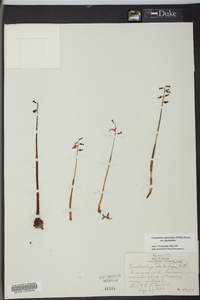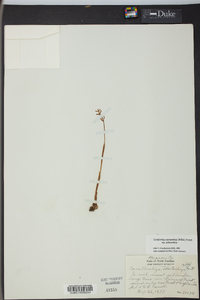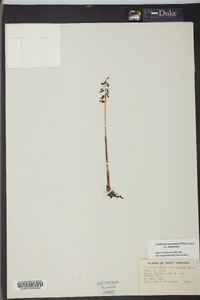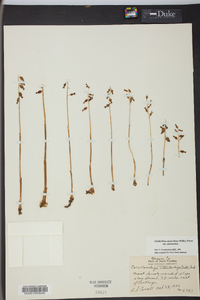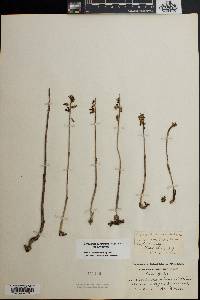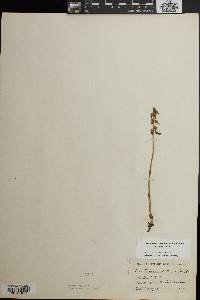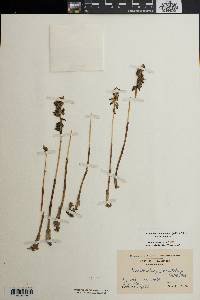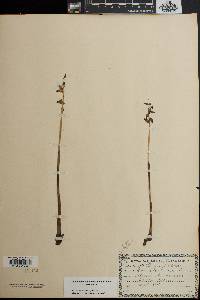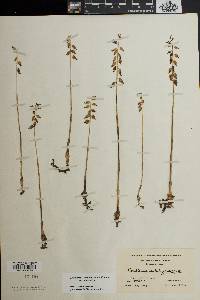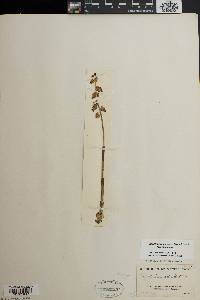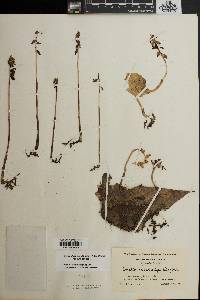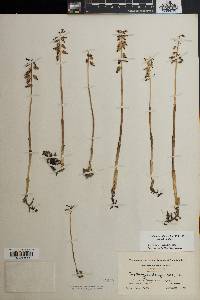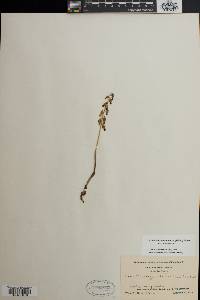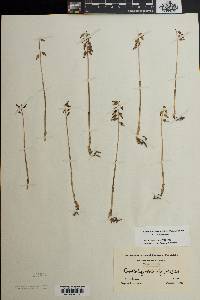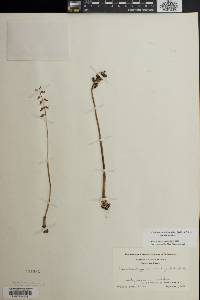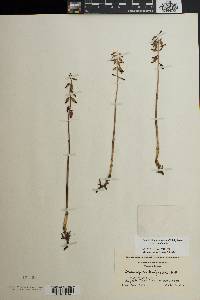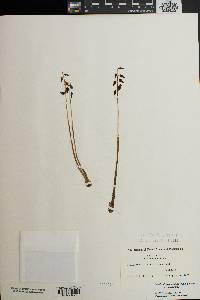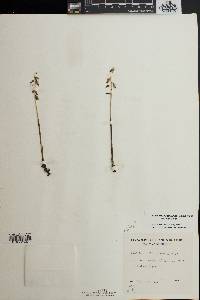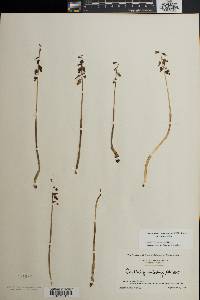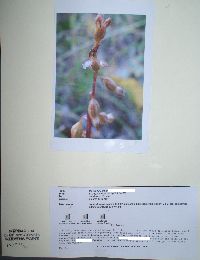Corallorhiza odontorhiza var. odontorhiza
|
|
|
|
Family: Orchidaceae
fall coral root, more...autumn coralroot, small-flowered coral-root
[Corallorrhiza micrantha Chapm., orth., moreCorallorrhiza odontorhiza var. odontorhiza (Willd.) Poir., orth.] |
Flowers: perianth tending to be closed; lip distinctly different from lateral sepals, 2.6-3.8 × 1.7-2.2 Flowering mid Aug--Oct. Rich deciduous woods, mixed woods, and conifer plantations; 0--2800 m; Ont., Que.; Ala., Ark., Conn., Del., D.C., Fla., Ga., Ill., Ind., Iowa, Kans., Ky., La., Maine, Md., Mass., Mich., Minn., Miss., Mo., Nebr., N.H., N.J., N.Mex., N.Y., N.C., Ohio, Okla., Pa., R.I., S.C., S.Dak., Tenn., Tex., Vt., Va., W.Va., Wis.
Perennial mycotrophic (saprophytic) herb 10 - 40 cm tall Leaves: none. Inflorescence: a single, erect, terminal, long-stalked, loose, spike-like cluster of two to twenty, slender-stalked, inconspicuous flowers with each flower subtended by a minute bract. This rather short (usually under 25 cm tall) and narrow (1 - 2.5 cm wide) inflorescence usually only produces cleistogamous flowers, that is flowers that remain closed, self-fertilize, and are quite fertile. Flowers: dark brownish purple to more reddish purple, small (3 - 5 mm long), closed to slightly open, bilaterally symmetric, lacking a spur, but with sepals and petals close together and pointing forward. The reproductive parts of stamens, stigma and style are fused into a column above the 2.5 - 5 mm long, greatly swollen, inferior ovary. Sepals: three, forward-pointing, petal-like, dark purple-brown or reddish purple, with central sepal 3 - 4 mm long and 1 - 1.5 mm wide while lateral sepals somewhat narrower (about 1 mm wide) and a bit longer (3 - 5 mm long). The upper sepal has a single prominent lengthwise vein and is fairly lance-shaped with a blunt tip, but the lateral sepals are more linear. Petals: three, with upper two pointing forward and converging with upper sepal to form a hood over lip petal. The two lateral petals are 3 - 4 mm long, 1 mm wide, lance-shaped, and greenish purple to brown. Lip white with purple to magenta streaks or spots, 2 - 4 mm long, 1.7 - 2.5 mm wide, unlobed, oval or more spoon-shaped with very narrow base. The main surface of the lip petal also has two divergent lengthwise ridges (lamellae) near the base. Fruit: several, stalked, nodding, 5.5 - 8 mm long, 3.5 - 5 mm wide, plump, rounded to ellipsoid capsules with remnant column at apex. Flowering stem: single, erect, strongly thickened and bulbous at base, hairless, fleshy, brownish to purple or yellow to greenish, lacking leaves, but with a few tubular sheaths. This leafless structure terminated by flowers is called a scape and technically is not a true stem. Root system: lacking true roots, but with multiple-branched, coral-like rhizome with swollen area meeting stem base. Column: straight or curved toward lip, white at base and often purple toward tip, 1.9 - 2.5 mm long, 0.8 - 1 mm wide, with 0.2 - 0.4 mm long and 0.3 - 0.5 mm wide stigma. Similar species: Corallorhiza odontorhiza var. odontorhiza is most similar to C. odontorhiza var. pringlei, but that variety usually has open flowers, the lip petal is wider and more rounded (2 - 3.7 mm wide, 2.7 - 4.6 mm long) with a fringed tip, and has a larger stigmatic surface (0.3 - 0.5 mm long, 0.7 - 1 mm wide). In that variety the column is also shorter (1.8 - 2.4 mm long), broader (0.8 - 1.7 mm wide), and has two distinct ear-shaped appendages on its upper surface near the base. Somewhat similar is C. wisteriana, but that species has a larger central sepal (over 4.5 mm long) with three veins, and it flowers much earlier in the year (April to June). The other species of Corallorhiza in the Chicago Region have more open flowers with spreading (or downcurved) sepals and petals, and the lip petal has two small lateral lobes or teeth. Flowering: mid-August to mid-September Habitat and ecology: Occasional, in dry oak woods, successional beech woods, or wooded banks. It is very tolerant of disturbance, and occurs on both acidic and basic substrates. Occurence in the Chicago region: native Notes: The flowers of this variety tend not to open (cleistogamous) and therefore reproduce by self-pollination, which is often evident by greatly swollen ovaries in an immature inflorescence. Since these flowers have no need for pollinators, the flowers remain closed. Etymology: Corallorhiza comes from the Greek words korallion, meaning coral, and rhiza, meaning root, in reference to the branching, underground rhizome, which has a similar appearance to coral. Odontorhiza means "toothed root" in reference to the tooth-like swelling of the stem base above the rhizome. Author: The Field Museum |

